
VNU Journal of Economics and Business, Vol. 4, No. 1 (2024) 96-105
96
Original Article
Forest land use contribution to livelihoods and
food security of Nghe An’s ethnic people:
Lessons learned for the REDD+ program
Nguyen Dinh Tien*
VNU University of Economics and Business
No. 144 Xuan Thuy Road, Cau Giay District, Hanoi, Vietnam
Received: September 27, 2023
Revised: February 20, 2024; Accepted: February 25, 2024
Abstract: Shifting cultivation activities were banned in the upland area of Nghe An Province to
reduce deforestation and forest fires which were greatly affecting the livelihoods of ethnic people.
This study evaluates the current land use and local people's awareness of the role of different land
use types in their livelihoods when implementing the REDD+ program in Nghe An. The results
show that the livelihoods of local people in Moi villages (Luc Da commune) and Diem villages
(Chau Khe) mainly come from agricultural production. Income from forestry (acacia, bamboo, and
non-timber forest products) accounts for 60% of total household income. Most households in the
two villages suffer from food shortages for 3 to 8 months a year. The net profits from different types
of land use show that bamboo brings high economic profits. Local people are not willing to convert
crops to the REDD+ mechanism. Therefore, local authorities need to support people in improving
their livelihoods and income from agricultural and non-agricultural activities.
Keywords: Livelihoods, Nghe An, REDD+, shifting cultivation. *
________
* Corresponding author
E-mail address: nguyendinhtien@vnu.edu.vn
https://doi.org/10.57110/jebvn.v3i1.261
Copyright © 2024 The author(s)
Licensing: This article is published under a CC BY-NC 4.0 license.
VNU Journal of Economics and Business
Journal homepage: https://jebvn.ueb.edu.vn

N.D. Tien / VNU Journal of Economics and Business, Vol. 4, No. 1 (2024) 96-105
97
Sử dụng đất lâm nghiệp gắn liền với sinh kế và
an toàn lương thực của người dân vùng cao Nghệ An:
Bài học cho chương trình REDD+ tại địa phương
Nguyễn Đình Tiến*
Trường Đại học Kinh tế - Đại học Quốc gia Hà Nội
144 Xuân Thủy, Cầu Giấy, Hà Nội, Việt Nam
Nhận ngày 23 tháng 11 năm 2023
Chỉnh sửa ngày 6 tháng 2 năm 2024; Chấp nhận đăng ngày 25 tháng 2 năm 2024
Tóm tắt: Các hoạt động canh tác nương rẫy bị cấm ở vùng cao nhằm giảm phá rừng và cháy rừng
đã ảnh hưởng nhiều đến sinh kế của người dân địa phương. Nghiên cứu này đánh giá thực trạng sử
dụng đất lâm nghiệp và nhận thức của người dân địa phương về vai trò của các loại hình sử dụng
đất với sinh kế khi thực hiện chương trình REDD+ tại tỉnh Nghệ An. Kết quả cho thấy, sinh kế của
người dân địa phương tại hai bản Mọi (xã Lục Dạ) và bản Diềm (Châu Khê) chủ yếu đến từ sản xuất
nông nghiệp, trong đó thu nhập từ rừng chiếm đa số. Thu nhập từ trồng rừng (keo, tre và lâm sản
ngoài gỗ) chiếm 60% tổng thu nhập của hộ gia đình. Hầu hết hộ gia đình tại hai bản đều bị thiếu
lương thực từ 3 đến 8 tháng. Phân tích kết quả tính toán lợi nhuận ròng từ các loại hình sử dụng đất
cho thấy, tre nứa đem lại lợi nhuận kinh tế cao. Do đó, người dân không sẵn sàng chuyển đổi cây
trồng sang cơ chế REDD+. Chính quyền địa phương cần hỗ trợ người dân trong phát triển sinh kế,
cải thiện thu nhập từ các hoạt động nông nghiệp và phi nông nghiệp.
Từ khóa: Sinh kế, Nghệ An, REDD+, canh tác nương rẫy.
1. Giới thiệu *
Sự đóng góp lớn nhất của ngành lâm nghiệp
là thông qua các chức năng bảo vệ môi trường
như duy trì và phục hồi độ phì nhiêu của đất, cải
tạo đất, kiểm soát xói mòn và duy trì đa dạng sinh
học (Aju, 2014). Ngoài ra, lâm nghiệp còn đóng
vai trò quan trọng trong việc cung cấp lương
thực, đảm bảo dinh dưỡng/duy trì đất đai, an ninh
môi trường thông qua quá trình cô lập carbon
giúp đảm bảo an ninh khí hậu và mang lại những
giá trị bảo tồn văn hóa tín ngưỡng cộng đồng, thu
nhập cho người dân trên toàn thế giới (Temu &
Msanga, 1994; Härkönen & Vainio-Mattila,
1998; Kajembe và cộng sự, 2000; Ruffo và cộng
sự, 2002; Nyambo và cộng sự, 2005; Caspersen
và cộng sự, 2018, Miller và cộng sự, 2020;
Chamberlain, 2020; Jhariya và cộng sự, 2022).
________
* Tác giả liên hệ
Địa chỉ email: nguyendinhtien@vnu.edu.vn
https://doi.org/10.57110/jebvn.v3i1.261
Bản quyền @ 2024 (Các) tác giả
Bài báo này được xuất bản theo CC BY-NC 4.0 license.
Các nhà lãnh đạo châu Á cũng đã thừa nhận sự
cần thiết của rừng đối với an ninh lương thực,
phát triển kinh tế và hỗ trợ cộng đồng địa phương
(Guerrero và cộng sự, 2015).
Biến đổi khí hậu đã và đang diễn ra không
chỉ ảnh hưởng đến đời sống sinh kế hộ gia đình
mà còn ảnh hưởng đến các loài và hệ sinh thái.
Sự phục hồi rừng là một cách hiệu quả nhất để
giảm thiểu tác động của biến đổi khí hậu.
REDD+ (Reducing Emission from Deforestation
and Forest Degradation) là chương trình có thể
đem lại sự đa dạng sinh học và phục hồi những
cánh rừng đã biến mất (Montreal & Eschborn,
2011). Ngoài ra, cơ chế REDD+ nhằm bù đắp về
tài chính để tránh mất rừng và suy thoái rừng
thông qua khuyến khích quản lý rừng bền vững,
cải thiện sinh kế cho người dân và cộng đồng
người dân địa phương sống phụ thuộc vào rừng

N.D. Tien / VNU Journal of Economics and Business, Vol. 4, No. 1 (2024) 96-105
98
(Ha, 2015). Khi đa dạng sinh học bị giảm sút, các
loài động vật hoặc sản phẩm từ rừng bị cạn kiệt,
đời sống của người dân sẽ gặp nhiều khó khăn
(Vinceti, 2008; Ruffo và cộng sự, 2002). Nghiên
cứu tại Madagascar - một quốc gia ở Đông Phi,
Lalaina và cộng sự (2011) đã chỉ ra các đặc điểm
kinh tế - xã hội của nhóm hộ trong cộng đồng bị
ảnh hưởng hoặc bị tác động bởi dự án REDD+.
Đặc biệt, nhóm hộ dễ tổn thương như hộ nghèo
dân tộc thiểu số bị ảnh hưởng mạnh nhất vì sinh
kế của họ phụ thuộc nhiều vào tài nguyên rừng.
Vì vậy, phát triển dự án REDD+ không chỉ duy
trì bảo vệ rừng, bảo vệ môi trường mà cần phải
xem xét vấn đề sinh kế và lương thực cho người
dân hoặc cộng đồng sống dựa vào rừng. Chazdon
và cộng sự (2009) cho rằng hành lang pháp lý,
thể chế tại các nước đang phát triển thường
không đầy đủ, thu nhập và khả năng tiếp cận
nguồn tài nguyên như đất đai và các tài nguyên
sinh thái của các hộ cũng không ổn định. Điều
này thường buộc người nghèo ở nông thôn phải
ưu tiên các nhu cầu ngắn hạn hơn là tính bền
vững lâu dài.
Trong những năm gần đây, thực trạng về
an ninh lương thực tại các tỉnh vùng cao, đặc
biệt là vùng cao của tỉnh Nghệ An đang đứng
trước những khó khăn do tác động của biến đổi
khí hậu, năng suất lúa nương và các cây trồng
khác bị giảm sút. Ngoài ra, do tác động của
chính sách giao đất giao rừng, quy hoạch canh
tác nương rẫy tập trung, người dân phải canh
tác thường xuyên trên một diện tích cố định
nên độ phì của đất giảm, dẫn đến năng suất cây
trồng giảm. Tình trạng thiếu lương thực tại các
hộ gia đình diễn ra phổ biến hơn so với trước
khi giao đất giao rừng. Số lượng hộ gia đình
thiếu lương thực tăng lên so với trước năm
1998 (Nguyen và cộng sự 2011). Việc đánh giá
nguồn sinh kế và chiến lược sử dụng đất của
cộng đồng tại địa phương có ý nghĩa quan
trọng trong việc triển khai thực hiện dự án
REDD+ trên địa bàn tỉnh, là bài học cho quá
trình mở rộng dự án REDD+ trên toàn quốc.
2. Phương pháp nghiên cứu
2.1. Phương pháp chọn điểm nghiên cứu
Lục Dạ và Châu Khê là hai xã thuộc huyện
Con Cuông, tỉnh Nghệ An được lựa chọn làm
điểm nghiên cứu. Con Cuông là huyện nghèo
phía Tây của tỉnh Nghệ An. Sản xuất lúa nước,
nương rẫy, trồng rừng và chăn nuôi gia súc là
nguồn thu nhập chính của người dân địa phương.
Hình 1: Bản đồ địa bàn nghiên cứu
Nguồn: Tổng hợp của tác giả.
Xã Lục Dạ có diện tích tự nhiên 12.272 ha,
trong đó đất lâm nghiệp là 10.983 ha (chiếm
89,5%) diện tích đất tự nhiên của xã. Đất rừng
sản xuất là 4.958 ha bao gồm các loại cây keo lai,
xoan và tre nứa. Rừng phòng hộ chiếm 2.693 ha
và rừng đặc dụng khoảng 3.330,8 ha. Giai đoạn
trước khi bị cấm canh tác nương rẫy (1995), diện
tích rừng của xã bị tàn phá mạnh nhất. Trong thời
kỳ canh tác nương rẫy, thời gian bỏ hóa đất
khoảng 7-8 năm. Tuy nhiên, sau khi giao đất giao

N.D. Tien / VNU Journal of Economics and Business, Vol. 4, No. 1 (2024) 96-105
99
rừng và cấm canh tác nương rẫy, diện tích canh
tác bị nhỏ hẹp, các hộ phải canh tác trên diện tích
giao khoán hàng năm dẫn đến giảm độ phì của
đất, năng suất cây trồng giảm rõ rệt. Do đó,
những năm gần đây, người dân tham gia nhiều
vào trồng rừng, đặc biệt là trồng tre và keo. Lục
Dạ là xã nghèo nên một số chương trình như 134,
135 đã hỗ trợ gạo, phân bón và con giống cho
các hộ gia đình để phát triển kinh tế hộ (Ủy ban
Nhân dân xã Lục Dạ, 2023).
Xã Châu Khê có tổng diện tích tự nhiên là
44.057,66 ha. Diện tích đất rừng của xã giảm
mạnh giai đoạn 2008-2011 (giảm 36 ha), trong
đó chủ yếu là rừng đặc dụng; tuy nhiên đến giai
đoạn 2021-2022, diện tích rừng trồng tăng lên
khoảng 55 ha. Châu Khê là xã có diện tích đất tự
nhiên rộng nhất huyện Con Cuông nhưng phát
triển kinh tế kém do phần lớn diện tích của xã giáp
với biên giới Việt - Lào, điều kiện giao thông khó
khăn (Ủy ban Nhân dân xã Châu Khê, 2023).
2.2. Phương pháp thu thập và xử lý dữ liệu
2.2.1. Thu thập dữ liệu thứ cấp
Dữ liệu được thu thập chủ yếu từ các tài liệu,
nghiên cứu trong và ngoài nước liên quan đến sử
dụng hiệu quả đất lâm nghiệp, khung sinh kế bền
vững và an toàn lương thực.
2.2.2. Thu thập dữ liệu sơ cấp
Nghiên cứu sử dụng nguồn dữ liệu sơ cấp
được thu thập thông qua điều tra phỏng vấn hộ
gia đình và họp nhóm. Trong quá trình họp
nhóm, tác giả đã yêu cầu người dân mô phỏng
địa hình thôn bản, khoanh vùng khu vực sản
xuất, rừng. Các kịch bản khi có sự tác động của
dự án REDD+ tại địa phương được thảo luận
trong quá trình xây dựng bản đồ thôn bản. Tại
mỗi xã, tác giả tiến hành tổ chức họp nhóm với
người dân địa phương, mỗi nhóm gồm 10 người
dân bao gồm các độ tuổi khác nhau và đảm bảo
cân bằng về giới. Các nội dung thảo luận gồm:
- Phần 1: Xác định/liệt kê mô hình/loại hình
quản lý đất của nhóm hộ; xác định và mô tả chi
tiết các hoạt động sản xuất cho mỗi loại hình sử
dụng đất cũng như thời gian quay vòng hoặc bỏ
hóa đất cho khoảng thời gian 30 năm (bắt đầu từ
khi khai hoang mảnh đất).
- Phần 2: Đánh giá vai trò của các loại hình
sử dụng đất đến sinh kế và môi trường. Khác với
nội dung phần 1, trong phần này, người tham gia
họp nhóm được chia làm hai nhóm theo giới tính.
Sinh kế và dịch vụ môi trường của mỗi loại hình
sử dụng đất được thu thập thông qua phương
pháp cho điểm.
+ Đánh giá đóng góp của các loại hình canh
tác đối với đời sống của hộ (giá trị của các loại
hình canh tác đối với sinh hoạt gia đình, an toàn
lương thực, các hoạt động chi tiêu khác như cưới
xin, ma chay…).
+ Đánh giá đóng góp cho hệ sinh thái của loại
hình canh tác (giá trị của mỗi loại hình canh tác
khác nhau đối với nguồn nước sinh hoạt, chống
xói mòn và bảo tồn đa dạng sinh học).
- Phần 3: Phân tích hoạt động tài chính của
các loại hình sử dụng đất. Phỏng vấn hộ gia đình
được thực hiện tại bản Diềm và bản Mọi dựa trên
tư vấn của cán bộ nông nghiệp xã. Mỗi bản tiến
hành phỏng vấn 50 hộ dân theo các tiêu chí phân
loại hộ từ họp nhóm. Cán bộ nông nghiệp xã
chọn mẫu ngẫu nhiên từ danh sách hộ tham gia
sản xuất nông nghiệp tại xã. Hệ thống câu hỏi
phỏng vấn được soạn thảo và điều tra thử để
kiểm tra mức độ thu thập thông tin khả thi và
kiểm tra tính chính xác của thông tin thu thập.
Các câu hỏi in sẵn tập trung vào việc thu thập các
dữ liệu phục vụ nghiên cứu đánh giá tác động của
dự án REDD+ đến tình hình sử dụng đất và
nguồn thu nhập của hộ gia đình. Dữ liệu về đánh
giá lợi nhuận và chi phí (NPV) cho từng loại hình
sử dụng đất dựa theo công thức tính như sau:
Π = 𝑝 × 𝑞 − 𝑐
Trong đó: Π = Lợi nhuận (VND/ha); p = Giá
bán (VND/tấn); q = Sản lượng (tấn); c = Tổng
chi phí (chi phí sản xuất, chi phí lao động, chi phí
thuê đất…)
2.2.3. Phân tích dữ liệu
- Phương pháp thống kê mô tả: Phương pháp
này được vận dụng để mô tả bức tranh tổng quát
về tình hình cơ bản của các địa bàn nghiên cứu,
thực trạng sản xuất nông nghiệp và diện tích đất
rừng, thực trạng các nguồn lực sinh kế cho giảm
nghèo bền vững tại các địa phương. Thông qua
phương pháp này, nghiên cứu có thể mô tả được
các yếu tố tác động đến sinh kế của người dân.
- Phương pháp tính lợi nhuận ròng (NPV):
Đây là một trong những công cụ đánh giá về tài
chính hiệu quả nhất trong ước lượng đầu tư.
Công thức tính như sau:
nt
tt
tt
i
CB
NPV
01

N.D. Tien / VNU Journal of Economics and Business, Vol. 4, No. 1 (2024) 96-105
100
Trong đó: Bt là lợi nhuận tại thời điểm t; Ct
là chi phí tại thời điểm t; t là thời gian thường
tính là 1 năm; i là tỷ lệ chiết khấu. NPV được áp
dụng tính cho mỗi loại hình đất canh tác cho từng
cây trồng tại địa phương. Thông thường, người
đầu tư sẽ dựa vào kết quả của NPV để đưa ra
quyết định. Trong trường hợp có nhiều giá trị
NPV > 0, nhà đầu tư sẽ chọn loại hình sản xuất
có NPV dương lớn nhất.
3. Kết quả nghiên cứu và thảo luận
3.1. Đặc điểm phân loại hộ gia đình và nguồn
sinh kế
Kết quả thảo luận nhóm tại hai bản Diềm và
Mọi (dựa vào xếp hạng và phân loại) và dữ liệu
từ bảng phỏng vấn dựa trên các hoạt động sản
xuất nông nghiệp, hoạt động phi nông nghiệp và
chăn nuôi gia súc. Mô hình sinh kế và chiến lược
sinh kế xã hội của các hộ được chia làm 4 loại hộ
(nhóm hộ):
- Nhóm A: Các hộ gia đình có ít đất canh tác
hoặc hạn chế về đất canh tác (ví dụ như đất rừng
quá xa không thể canh tác được hoặc đất khô
cằn) và các hộ có rất ít hoặc không có diện tích
lúa nước. Các hộ này có thu nhập phi nông
nghiệp không nhiều, đây không phải là nguồn
thu nhập chính; họ phụ thuộc nhiều vào thu hái
lâm sản ngoài gỗ như măng, nứa, mật ong rừng
hoặc trợ cấp từ Chính phủ.
- Nhóm B: Nhóm hộ có đa dạng về sinh kế
hơn so với nhóm A. Tại bản Diềm, các hộ có diện
tích nhỏ lúa nước và diện tích rừng sản xuất cũng
như một số hoạt động phi nông nghiệp. Tuy
nhiên, tại bản Mọi, người dân chia loại hộ B với
điều kiện tương tự như nhóm hộ A về điều kiện
sản xuất, nhưng nhóm hộ này lại có nhiều hoạt
động phi nông nghiệp như làm thuê hơn so với
nhóm hộ A.
- Nhóm C: Tại bản Diềm, các hộ gia đình có
nguồn thu chủ yếu từ canh tác lúa nước, ngoài ra
trồng keo, nứa và tham gia các hoạt động phi
nông nghiệp. Tuy nhiên, tại bản Mọi, nhóm hộ
này được phân loại giống như bản Diềm về điều
kiện đất canh tác nhưng lại có hoạt động chăn
nuôi trâu, bò. Họ không tham gia vào các hoạt
động phi nông nghiệp như nhóm hộ tại bản Diềm.
- Nhóm D: Nhóm hộ có diện tích về đất lúa
ruộng và đất rừng lớn, phụ thuộc nhiều vào các
hoạt động nông nghiệp. Họ có đủ lương thực từ
sản xuất lúa nước, chăn nuôi trâu bò; có diện tích
rừng trồng keo và tre nứa lớn.
Bảng 1 cho thấy các nhóm hộ tại bản Diềm
không có sự khác nhau có ý nghĩa thống kê về
tuổi của chủ hộ, trình độ học vấn, nhân khẩu và
diện tích trồng ngô. Trong khi đó, lực lượng lao
động, diện tích trồng keo, tre nứa, sắn, lúa nước
và diện tích rừng sản xuất có sự khác nhau giữa
các nhóm hộ. Nhóm hộ 4 (D) thường có diện tích
lớn hơn so với 3 nhóm hộ còn lại, trung bình mỗi
hộ có khoảng 0,16 ha lúa nước. Thực tế tại bản
Diềm, trong vài năm gần đây nhiều hộ được sự
hỗ trợ của Nhà nước về việc tăng cường khai
hoang diện tích lúa ruộng canh tác nhằm giảm áp
lực canh tác lúa nương, vì thế họ đã khai hoang
lúa nước để sản xuất. Ngoài ra, lúa nước là phần
dự trữ lương thực quan trọng tại các hộ do phần
diện tích lúa nương bị hạn chế.
Bảng 1: Tình hình cơ bản của nhóm hộ điều tra tại bản Diềm năm 2021
Bản Diềm Loại hộ ANOVA
A B C D F-value
Tuổi chủ hộ (năm) 30,57 42,54 38,69 42,77 0,04
ns
Trình độ học vấn (năm đi học) 5,86 6,21 5,46 6,33 1,09
ns
Nhân khẩu (người) 4,00 4,86 5,15 5,46 0,37
ns
Lao động (người) 2,43 3,50 3,54 4,08 5,04**
Diện tích trồng keo (ha) 0,03 0,36 0,14 1,33 18,07***
Diện tích trồng tre nứa (ha) 0,02 0,56 0,08 2,92 56,74***
Diện tích trồng sắn (ha) 0,01 0,08 0,12 0,17 5,36**
Diện tích rừng sản xuất (ha) 0,10 6,34 5,95 4,51 7,49***
Diện tích lúa nước (ha) 0,07 0,05 0,13 0,16 7,02***
Diện tích trồng ngô (ha) 0,01 0,04 0,07 0,22 0,83ns
Nguồn: Số liệu khảo sát.

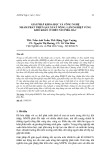
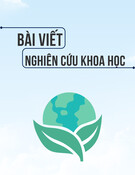
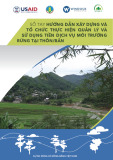
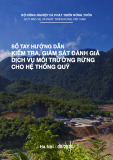
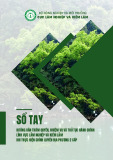

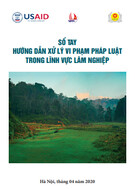
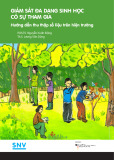




![Hỏi đáp pháp luật lâm nghiệp: Tài liệu [mới nhất/chuẩn nhất]](https://cdn.tailieu.vn/images/document/thumbnail/2025/20250711/vijiraiya/135x160/626_tai-lieu-hoi-dap-ve-phap-luat-lam-nghiep.jpg)



